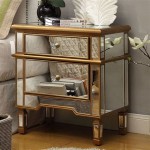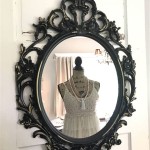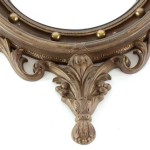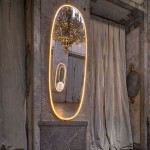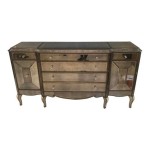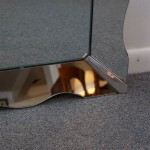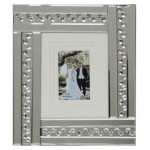How To Make Mirror Frames From Wood
Creating a custom wood frame for a mirror elevates its aesthetic appeal and adds a personal touch to any space. This process involves several steps, from selecting the appropriate wood to applying the finishing touches. This article will guide you through the process of crafting a beautiful and durable mirror frame.
Material Selection and Preparation:
The choice of wood significantly impacts the frame's final appearance. Hardwoods like oak, maple, and cherry offer durability and a rich aesthetic, while softwoods like pine and fir are more budget-friendly and easier to work with. Consider the mirror's size, the desired frame style, and the surrounding décor when selecting the wood type.
Once the wood is chosen, it needs to be prepared. This involves planing the boards to the desired thickness and ensuring they are straight and free of defects. The width of the boards will depend on the desired frame size and profile.
Measuring and Cutting:
Accurate measurements are crucial for a well-fitting frame. Measure the mirror's dimensions carefully. The inside edges of the frame pieces should match these measurements precisely. Add the desired frame width to these measurements to determine the length of each frame piece. For example, if the mirror is 20 inches wide and the desired frame width is 3 inches, each side piece of the frame will be 26 inches long.
A miter saw is the ideal tool for cutting the frame pieces. It allows for precise angle cuts, which are essential for creating neat, joining corners. Set the miter saw to a 45-degree angle and make the cuts. Double-check each measurement before cutting to avoid errors.
Joining the Frame Pieces:
Wood glue is the primary adhesive for joining the frame pieces. Apply a generous amount of glue to the mitered edges, ensuring even coverage. Then, clamp the pieces together, ensuring tight and flush corners. Use corner clamps specifically designed for mitered joints to maintain perfect 90-degree angles during the gluing process.
Allow the glue to dry completely according to the manufacturer's instructions. Once dry, reinforce the joints with wood screws or brads for added strength and stability. Countersink the screws or brads and fill the holes with wood filler for a seamless finish.
Creating a Rabbet or Lip:
A rabbet, also known as a lip or rebate, is a recess cut along the inside edge of the frame. This recess holds the mirror securely in place. The rabbet's depth and width should correspond to the mirror's thickness.
A router with a rabbeting bit is the most efficient tool for creating a rabbet. Set the router to the desired depth and width and carefully rout along the inside edge of the frame. Alternatively, a table saw can be used to create a rabbet, but this requires multiple passes and careful adjustments.
Sanding and Finishing:
Sanding the frame smooth is crucial for achieving a professional finish. Start with a coarser grit sandpaper (around 120-grit) to remove any imperfections and level the surface. Gradually progress to finer grits (180-grit, 220-grit) to achieve a smooth, even surface.
Once the sanding is complete, apply a wood finish. The choice of finish depends on the desired aesthetic and the type of wood. Options include paint, stain, varnish, or polyurethane. Each offers different levels of protection and visual appeal. Apply the finish according to the manufacturer's instructions, allowing ample drying time between coats.
Installing the Mirror:
Once the finish is completely dry, carefully place the mirror into the rabbet. Ensure a snug fit. Secure the mirror using mirror clips, points, or glazing tape. These methods provide secure attachment while allowing for slight expansion and contraction of the wood.
Adding Hanging Hardware:
Attach D-rings or wire to the back of the frame for hanging. Ensure the hardware is appropriately sized for the weight of the mirror and frame. Position the hardware evenly to ensure the mirror hangs level.
Customization:
The presented steps outline the fundamental process. Further customization can be achieved through decorative elements. This could include carving, adding moldings, or applying decorative paint techniques. The possibilities for customization are limited only by one's imagination and skill level.

Diy Farmhouse Wood Frame Mirror She Gave It A Go

Diy Framed Mirror Jaime Costiglio

Framed Floor Mirror Love Grows Wild

Diy Farmhouse Wood Frame Mirror She Gave It A Go

How To Make A Wood Mirror Frame

Diy Wood Framed Mirror Easy Home Decor
Diy Modern Mirror Re Frame What Not To Do Kayla Simone Home

Easy Driftwood Mirror The Wood Grain Cottage

How To Build A Mirror Frame Simple Woodworking

How To Build A Diy Wood Mirror Frame The Holtz House

